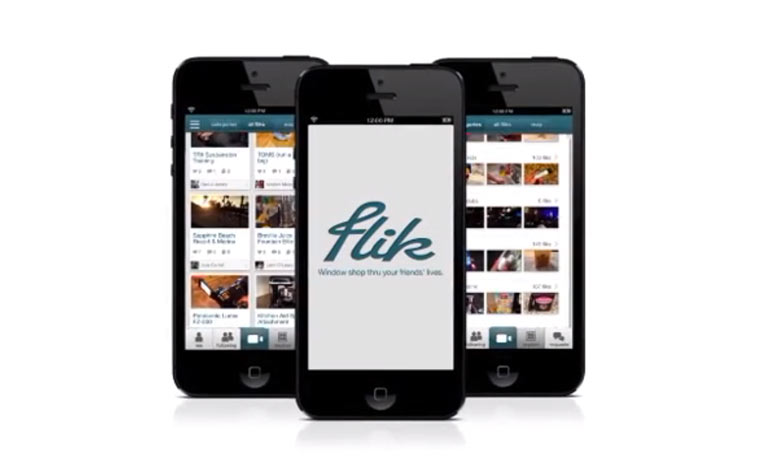 You’ve spent 12 months building the most wicked product on the planet. Now what?
You’ve spent 12 months building the most wicked product on the planet. Now what?
Now, you need customers, revenue, and growth. Here’s the sequence most entrepreneurs follow:
Step 1: You launch a blog
Step 2: You launch your Facebook page
Step 3: You start promoting your writing to your fan community of 50.
Then you wait. You’ve built it; why aren’t they coming?
You get pissed off. You hop in your car, go to the gym, or take a walk outside to take your mind off things. Then you see that big Coca Cola billboard with shiny, happy stock-photo people and blinding, bright colors — you can’t help but swoon. You’re craving Coca Cola’s fizzy goodness and wishing that Santa would bring you a $10 million paid advertising budget.
Hold it — the glamour of paid advertising is a total illusion
Get it together. Get back to your computer immediately and watch the first cat video that you can find. Little do you know it, but that’s your brilliant plan. It’s twice as powerful as any paid channel advertising strategy, and it’s free. Word of Mouth Marketing (WOM) is your new growth engine.
According to the McKinsey Quarterly, “word of mouth generates more than twice the sales of paid advertising in categories as diverse as skincare and mobile phones.”
And thanks to digital media, it’s not about neighbor A knocking on neighbor B’s door for advice anymore. Social media, content marketing, and online commenting platforms take WOM marketing to data-driven scale.
WOM is about street smarts, not rocket science
What does it take to get you talking about something? Most likely, it’s made you laugh out loud, saved you time, and solved your most pressing problems. It’s caught you by surprise and has struck an emotional chord.
As Wharton Marketing Professor Jonah Berger puts it: “Any product can be remarkable. Any product can be emotional.”
It’s about the connection you build with your end-user psychologically, functionally, personally, and emotionally.
Take one of the most ordinary products on the market, for instance — a blender. Does the word ‘bada*s’ come to mind? Probably not. Now read the following story about a company called Blendtec.
“In my favorite video, for example, they stick an iPhone in the blender,” Berger says. “They actually drop an iPhone in. They close the top, they press the button, and you watch the iPhone get torn up by this really, really strong blender. It gets reduced to shreds. Little shards of glass and all the other things that make up an iPhone. Lots of smoke. At the end of the day, it’s basically powder. Now you’ve never seen a blender tear an iPhone. You’ve never imagined that a blender could do that to an iPhone. Yet you see it, and it’s pure remarkability.”
What happens next?
You share the video with everybody, and all of a sudden Blendtec is bada*s. You need it in your kitchen to replace the frou-frou blades in your cupboard.
The “mystery” of WOM marketing
Like any good marketing plan, it follows a standard framework. Amazing marketers take the same basic skeletons and flesh them out.
“It doesn’t take a marketing genius — though they are smart marketers — to think about this,” says Berger. “What it takes is understanding the psychology behind social transmission — what makes us talk about and share thing.”
The trick is to stop thinking of your brand-building as a stream of consciousness, creative endeavor.
Think like a system with the following steps:
1. Take Control: Controversy Gets People Talking
Want to be a powerful influencer? Then own it. To be an authority, your brand persona needs to project confidence and charisma. No matter what you do, this mission-critical component will be your wow-factor.
Don’t be afraid to polarize people. If you’re scared to put yourself out there at the risk of pissing people off, you’ll be missing out.
Controversy gets people talking, and in terms of WOM, that’s awesome.
2. Value = What Your Customers Care About
It’s simple, folks. Know what your customers care about. What keeps them up at night, what motivates them to go to work in the morning, and what holds them back. It’s your job to give them exactly what they need.
 3. Quit Being Properly Polite and Be Authentic
3. Quit Being Properly Polite and Be Authentic
You probably hate the fluffy ‘be yourself’ advice. Thing is, you need to hear it. It’s natural to feel self-conscious and to hide behind a ‘professional’ mask. It’s natural to want approval from others. Thing is, it’s only going to hold you back. If you’re constantly trying to please others by looking like everyone else, you’re not going to stand out.
For example, take James Altucher, a financial expert and entrepreneur who built some of his biggest businesses through blogging. As he puts it in his Twitter bio: “For some reason, I’ve turned myself inside out and all my guts have spilled onto my blog.”
Why’s he so popular? Well he writes about topics that make us human, not rich. He helps us understand why our bosses are jerks and why we should think twice before judging a genuinely good person.
Ask yourself some questions: Would you say what you’re about to say to your best friend over a beer? What makes you passionate beyond the cubicle? That is what you should bring to the table.
Here’s a fun hypothetical exercise; wear a rubber band on your wrist. When you catch yourself saying something that doesn’t represent you, or that echoes someone else, pull the rubber band and snap it onto your wrist. Not only does that condition you to be more honest, but it is a funny talking point and will make you more remarkable (re: quirky, weird).
“Oh, yeah — I’m trying to be more honest, and I caught myself trying to be someone else. That thing I just said? I didn’t really mean it.”
You know when you meet that really boring person at a networking event or party. Yeah, they’re plenty smart and articulate, but man will they put you to sleep. Don’t be that guy. When you’re authentic, you’re interesting.
Tucker Max is interesting because he’s a jerk. He stands out. You don’t need to be a jerk, but you can and should embrace your inner edge.
4. Where Technology Meets Social Psychology
WOM is not about knocking on your neighbor’s door. It’s about tapping into social psychology to connect with customers on a human-to-human level. Technology amplifies that process and helps you do it at scale.
The brilliant growth hackers at AirBnB, for instance, have built a technology model to auto-post to Craigslist.
“It’s a win-win for everyone involved — both the people renting out their places by tapping into pre-build demand, and for renters, who see much nicer listings with better photos and descriptions,” wrote Andrew Chen for his blog.
5. Be Relentlessly Emotional
Logic keeps people intelligent and informed — but emotions move them. Word of mouth marketing depends on your brand’s ability to keep people engaged, energized, and inspired. It’s about love, anger, and humanity that’s powerful and raw.
Never, at any point in the game, let the fire of your emotional hook die. Write with emotion, tweet with emotion, and no matter what the hell you do, do not hold back. You’re lightning in a bottle.
A version of this post originally appeared on the author’s blog.
Dan Martell is the CEO/Founder of Clarity.fm. Co-Founder of Flowtown (Acquired ’11), Founder of Spheric Tech (Acquired ’08), Mentor @ 500Startup. Investor in many.
The Young Entrepreneur Council (YEC) is an invite-only organization comprised of the world’s most promising young entrepreneurs. In partnership with Citi, the YEC recently launched #StartupLab, a free virtual mentorship program that helps millions of entrepreneurs start and grow businesses via live video chats, an expert content library and email lessons.

 Does your startup have a company culture; should it?
Does your startup have a company culture; should it?



















